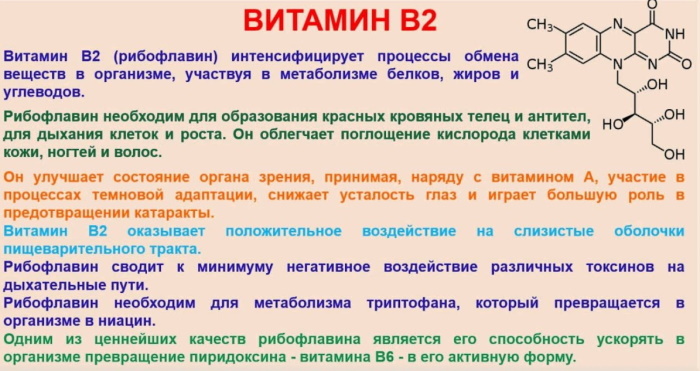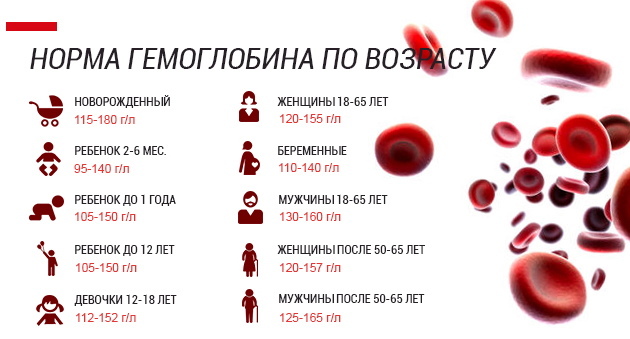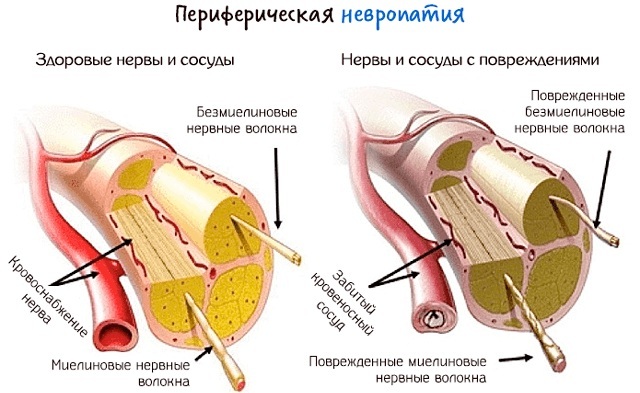These natural defense mechanisms, such as anatomical structure, the protective mucus and uterus cervical canal containing immunoglobulins and antibodies, acidic environment of the vagina, mikrobiotsinoz these departments, local immune defense in most cases can prevent the development of genital infection bodies. At their disorder in a given case develop acute or chronic endometritis, manifestations of which depends on the severity of the inflammation reaction.

What it is?
Endometriosis - this inflammatory changes in the mucous layer of the uterus after exposure septic infections or other pathogens.
The inflammatory process is at endometritis acute symptoms accompanied by bright or able to flow in chronic malosimptomno form. The development of chronic endometritis is due to late or incorrect treatment of acute inflammation.
Causes
The underlying cause of the disease is the formation of damaging mucous membrane of the uterus, which promotes the formation of the inflammatory process. But by itself this pathology can not provoke endometritis. An important role is played by lowered immunity in the process, failure to comply with health standards when performing manipulation. In addition, there are the following common reasons:
- Endoscopic diagnosis of the uterus;
- installation of intrauterine contraceptives;
- scraping the uterine cavity;
- probing the uterus;
- hysterosalpingography;
- sloppy douche.
Today special significance began to get postpartum endometritis. They are connected with the restructuring of the immune system of the female body. Inflammation very quickly affects the muscle layer of the uterus and serves as a dangerous complication of the postpartum period.
Dysmenorrhea refers to polyetiological diseases, the occurrence of which is affected by a variety of pathogens:
- Enterobacter;
- Proteus;
- chlamydia;
- mycoplasma;
- Streptococcus group B;
- E. coli;
- Klebsiella;
- diphtheria bacillus;
- tuberculous mycobacterium.
Chronic endometritis occurs due to improper treatment of acute as well as in the case when the infection settles permanently in the tissues. The causative agent can act above.
Types and classification
The first and basic classification - division endometritis acute and chronic.
- Acute endometritis - a problem that can even lead a woman on the operating table, and severe cases can and do lose their uterus because inflammation can lead to pelvioperitonitu.
- Chronic endometritis - indolent disease with periodic exacerbations and remissions, often associated with cooling and the passage of ovarian - menstrual cycle. Treatment duration, and, most often, it is held in antenatal clinics, and ambulatory. Only in exacerbations requiring hospitalization in profile hospital - gynecology department.
- There is also an intermediate, subacute form.
The second classification - the nature of the inflammatory process. Dysmenorrhea is divided into:
- necrotic (s necrosis mucus layer);
- catarrhal (most lightweight step inflammation);
- catarrhal - suppurative (purulent process attached);
- purulent forms;
- gangrenous (with the addition of an anaerobic flora, sharp intoxication, peritonitis).
The last two forms are very dangerous: the first - the development of scar tissue in the uterus, even when favorable outcome of a risk of infertility, and the other has a high mortality rate, even when urgent operations.
There are other classifications - eg, postpartum endometritis, which most often occurs at unfavorable course in the third trimester of pregnancy and obstetric various benefits associated with a high risk to the fetus is not so much as for the mother.

symptoms of endometritis
Symptomatology of the disease depends on many factors:
- aggressiveness of the pathogen;
- state immunity;
- the patient's age;
- predisposing conditions (especially hard endometritis occurs against the backdrop of the Navy, after a miscarriage or complications in childbirth);
- area affected mucosa of the uterus;
- concomitant presence of gynecological pathology.
The acute form
Most often occurs after childbirth and abortion. Symptoms appear 3-4 days after infection penetration into the uterus. In acute endometritis marked weakness, malaise, abdominal pain, rapid pulse, fever up to 38-38,5 ° C, and an increase in uterine induration, pain when her probing. Allocation muddy, abundant, with a putrid odor. Uterine bleeding are possible. In severe cases can develop pyometra (accumulation of pus in the uterus).
If wrong or defective treating acute endometritis may become chronic.
The chronic form
It arises as a consequence of diseases, sexually transmitted diseases, or with acute endometritis. The chronic form may proceed hidden and do not have clinical manifestations - then the diagnosis is based on laboratory data.
Symptoms, in addition to a number of those that are inherent in the acute phase, may be as follows:
- Menstrual irregularities, their duration.
- A significant change in the number of selections in the "critical days".
- Strengthening pain during menstruation.
- The color change of menses to brown due to accession of purulent component.
- Changing the color and character of the vaginal secretion and uterine cervix - it becomes a yellow-green and / or foam - as opposed to the normal transparent slizeobraznomu.
- Bleeding from the genital organs can occur outside the menstrual period.
In this form of the disease are observed structural changes in the endometrium, associated with impaired tissue or power cyst formation. Therefore, in women with chronic endometritis uncommon infertility or miscarriage t. To. The fertilized egg can not attach to the uterine modified shell.
postpartum endometritis
Develops acute postpartum endometritis in the first week after birth. Most probably its appearance in the case of manual uterus studies anhydrous long period and after cesarean section. According to the severity of postpartum endometritis can be:
- Easy - symptoms appear 5 to 12 days after birth. The general condition of the woman suffers little, the body temperature rises to 37-38 degrees C. Vaginal discharge (lochia) for a long time are bloody character. Uterus increased slightly, slightly painful on palpation.
- Medium gravity - manifestations occur at 2-7 hours post-partum period. Body temperature rises to 38-39 ° C, the general condition deteriorated women. Concerned about the weakness, muscle aches, pain in the abdomen. Lochia bleeding, with an admixture of pus and unpleasant smell. Uterus enlarged, palpation it causes pain.
- Severe - symptoms appear 2-3 days after birth. Body temperature rises to 39-40 degrees C, overall female suffers greatly. Her worried expression weakness, headache, lack of appetite, sleep disturbance. The urine color became dark beer, its selection is reduced. Intense abdominal pain, uterine palpation strengthens them. Lochia purulent putrid odor.

The consequences of the disease
The most serious complication of endometritis include the spread of infection: hematogenous - through the blood; limfagenno - lymph; by upward - through the fallopian tubes and downward - the cervix, vagina ways.
This leads to a "blood poisoning" - sepsis. Other complications include:
- chronization and outcome in chronic endometritis;
- process connection fallopian tubes and appendages - salpingitis and oophoritis;
- pelvioperitonit - as a result of contact with the pus into the pelvic cavity;
- forming pyometra - collection of pus in the uterus, in connection with occlusion (cervical pus obstruction and the inability to go out).
By late complications that arise when inadequate treatment may include:
- menstrual disorders;
- infertility;
- persistent pain in the lower abdomen.
This list does not exhaust the complications, because the inflammatory process may be the cause of any pathology that may emerge later. Therefore, early treatment and adequate treatment play an important role in the prevention of serious complications.
Is pregnancy possible?
Despite the seriousness of the disease, endometritis does not exclude the possible conception and subsequent progression of pregnancy. Undoubtedly, in many cases of chronic process pregnancy becomes a pipe dream, but if desired, and some effort this dream can not only bring, but also to carry out.
Chronicity of the process leads to a decrease in the area of the normal, ie healthy endometrium, which is required for implantation of the fertilized ovum and its support for the further development. After all, a well-functioning endometrium is able to grow to the end of the 2 phase of the cycle, ie to prepare so-called "Featherbed" to receive future embryo and zygote after implementation to ensure its early stages in the development of all the necessary nutrients substances.
Chronic endometritis did not rule out the possibility of fertilization (when available ovulation), but the pregnancy (in this case we are talking about biochemical pregnancy, when fertilization happened, and the implantation of yet) is interrupted at the stage of implementation of the zygote in the mucous uterus. Most do not even know about women is that they have had a miscarriage at a very early stage, clinically it looks like a bit late menstruation.
But even with the successful implantation of a pregnancy is often interrupted in the first trimester miscarriages and repeated at regular intervals (recurrent miscarriage). If in spite of that pregnancy continues to develop, the process itself is accompanied by numerous complications from the permanent threat of interruption to the birth of a child with growth retardation up to his death (during pregnancy, childbirth or soon after them).
In the case of an acute process of pregnancy is meaningless to talk until completed adequate treatment. But is it possible to get pregnant with chronic endometritis? In order not to frighten the women at once, the answer is yes: "Yes, pregnancy is quite possible." But what will it take?
Firstly, the approach to pregnancy conscious of what it means to think about the problem at the planning stage. You must visit a gynecologist and related professionals on the testimony, to begin to live a healthy life, give up bad habits (this also applies to the spouse), take vitamins and go examination. At least part of the survey submission of gynecological smears, pelvic ultrasound, tests for latent sexual infections, in some cases tests on hormones.
Upon confirmation of the diagnosis of chronic endometritis, and, especially when revealing the hidden sexual infections, gynecologist prescribe treatment. The therapeutic course of a very long, but it is important to pass it through. First appointed antibiotics, depending on the sensitivity of the selected pathogen. In the second stage of treatment of endometritis connected physiotherapy, immunomodulators, vitamins, proteolytic agents, and in some cases, oral contraceptives. Hormonal contraceptives necessary for recovery of the cyclic shifts of the functional layer of the endometrium.
After successful treatment of endometritis the expectant mother again being examined, in particular, pelvic ultrasound, on which she confirmed inactive endometritis, when the disease is in remission, and "give the go-ahead" to try become pregnant.
diagnosis of endometritis
In the diagnosis of endometritis the important role played by medical history - the regularity of the menstrual cycle, the presence in the history of the patient intrauterine interventions, use of intrauterine contraceptive devices, unprotected sex with non-regular partner.
During the physical examination, the following signs of endometritis can be detected:
- increasing the size of the uterus,
- seal body
- special sensitivity sidewalls body palpation.
In laboratory analyzes blood of patients with symptoms of acute forms endometritis diagnosed leukocytosis, increased erythrocyte sedimentation rate and C-reactive protein, indicating inflammation in the body. An important role in the diagnosis of acute and chronic endometritis also plays microscopy of vaginal smear. To confirm the ultrasound endometritis signs additionally apply pelvic organs and histological study of scraping the uterine endometrium.

endometritis treatment of an acute form
acute stage of the disease is treated in stationary conditions, the illustrated bed rest, absolute tranquility and balanced diet to meet drinking regimen.
The leading role in the therapy of diseases occupies antibacterial treatment (pre-defined susceptibility to certain antibiotics). The most frequently prescribed amoxicillin, kanamycin, clindamycin, gentamicin, ampicillin, lincomycin, etc. There may be multiple combination therapy with antibiotics in the case of mixed microbial infection. Often against the background of accession of anaerobic infections include metronidazole therapy.
To eliminate severe intoxication recommended intravenous solutions of salts and proteins of up to 2.5 liters per day. The treatment also include antihistamines, antifungals, multivitamin complexes, immunomodulators, probiotics. To relieve pain and inflammation, as well as for the relief of bleeding used cold on the stomach (two hours, half an hour break). After loosening and removing the acute manifestations of the disease in therapy include physiotherapy and hirudotherapy (leeches).
Treatment of chronic endometritis
Treatment of chronic endometritis has no specific schemes, it consists of a complex of therapeutic measures aimed at sluggish elimination of existing inflammation, restore proper function of the endometrium and concomitant elimination complications.
- Antibiotic therapy, by analogy with the treatment of acute inflammation, applied after bacteriological examination. Infection with chronic endometritis penetrates into the underlying structure, it is therefore more effective treatment is the administration of antibiotics directly to the mucous layer.
- Symptomatic therapy helps to improve blood circulation in the pelvic cavity, to accelerate healing of damaged endometrial and boost immunity.
In the presence of a long smoldering inflammation in the uterus against the backdrop of improper healing of endometrial adhesions formed. Typically, they are found at the stage of diagnostic hysteroscopy and dissect. Also for the treatment of chronic endometritis successfully applied physiotherapy. Used drug elektoroforez, UHF - therapy, pulsed ultrasonic waves, and many other methods. Effective therapeutic mud, radon baths, mineral wax, paraffin.
The volume of therapeutic interventions in chronic endometritis is always dependent on the nature of menstrual and generative functions. Restoration of normal two-phase cycle is an indicator of the effectiveness of hormonal correction. Combined hormonal drugs in a cyclic rhythm help to eliminate hormonal dysfunction.
As a rule, infertility in chronic endometritis is associated with pathological changes in the fallopian tubes. If the infection during the acute inflammation in the uterus could go higher, it provokes inflammation of the uterine tubes, leading to their deformation and clogging. After appropriate treatment tube patency is restored, and the patient has the possibility of becoming pregnant.
What is the difference between endometritis and endometriosis?
endometritis endometriosis are two separate diseases, which vary due to the occurrence, the mechanism of development and approaches to treatment.
In endometriosis observed the migration and proliferation of endometrial tissue in different parts of the human body. Under normal conditions, the endometrium is only present in the uterine cavity and is represented by two layers - the basal and functional, which vary depending on the phase of the menstrual cycle. Under the influence of hormones (estrogens and progesterone) occurs preparation endometrium for implantation embryo (observed proliferation of the functional layer, the appearance of a large quantity of iron and so Further). If pregnancy does not occur, blood estrogen and progesterone concentration decreases, which leads to rejection endometrial functional layer, i.e. to menstruation, after which it begins a gradual recovery (due basal layer).
In endometriosis Endometrial cells can be located almost anywhere in the body (but usually it is the wall of the uterus and pelvic organs - bladder, ovaries, etc.). They are subject to the same cyclical changes as the endometrium in the uterus (ie expand under the influence of sex hormones), which will condition the clinical picture of the disease.

prevention
Endometritis prevention measures include a:
- Observance of personal hygiene.
- Timely change intrauterine tampons.
- Early treatment of all infectious diseases, especially reproductive system.
- The practice of protected sex will protect the uterus against ingress of pathogens.
- Prophylactic antibiotics after the abortion, caesarean section or other complex pharmacological manipulation.
- Mandatory full examination after delivery would allow vyvit endometritis in the early stages, it is much easier treatment.
- Periodic surveillance by a gynecologist. Also with this specialist have to discuss methods of contraception, especially when using intrauterine devices.
Pregnant women with a history of endometritis should be under constant medical supervision.



